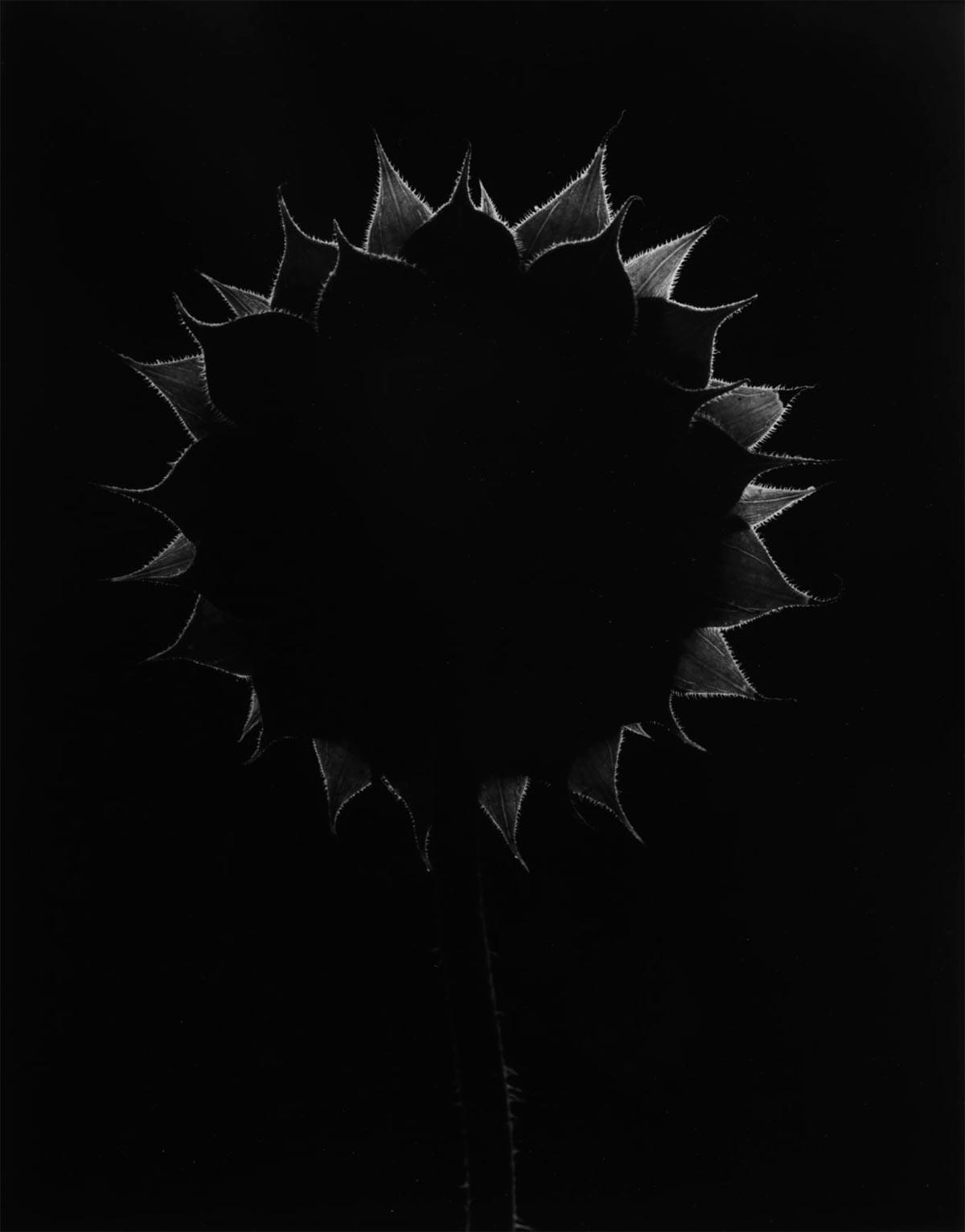Inspiration
Paul Caponigro
Dec 7, 1932 -
Photographer
Paul Caponigro's Inspiration
During two decades as a San Francisco Bay Area resident, I frequently photographed along the Monterey Coast including Point Lobos and Garrapata state parks. My trips often included a visit to Photography West Gallery in the picturesque tourist enclave of Carmel. Photography West exclusively features analog film photographers and printers, both current and deceased. The opportunity to view original works by Ansel Adams and Edward Weston (outside a museum exhibition) was a resplendent joy. It was there that I first saw the original works of Paul Caponigro.
I was remotely familiar with Caponigro’s work, having seen some of his more famous photographs on the Internet including Backlit Sunflower or Running White Deer, but viewing the actual prints, including photographs I had never seen before, was a sensorial revelation of his artistic achievement.
Photography West has a tradition of producing monographs for photographers it represents and I acquired Caponigro’s “Masterworks from Forty Years”. This retrospective work opens with a dedication from Caponigro himself:
This book is dedicated to those fellow photographers who share in the pursuit of spirit through discovery and creative intentions, who make craft a path of love and aim beyond reflections to reach the heart of their subjects.
Caponigro practiced “straight” photography, utilizing photography’s inherent ability to render a scene with sharpness and detail, while also striving for “equivalence”, offering photographs that not only convey what was seen, but what was sensed, felt, or intimately understood in the experience of creating the photograph. It was an idea I was intellectually familiar with, but uncertain that I had experienced directly.
At home, curled up in my favorite chair, warmed by a fire and a glass of red wine, I moved through the monograph delicately turning the pages, soaking in each new image. Middle way through, I turned the page to “Road and Cottage”, a compositionally straight forward pastoral photograph of a dirt road leading directly down to a distant white cottage glowing in low angled light. A near immediate gut level reaction welled up in me. I felt subtle elation and an intimate familiarity unlike anything I would have had the ability to describe previously. Here was a photograph that somehow was both recording and testament, demonstrating an awareness both equal to and transcendent of the subject itself. Caponigro had managed to convey what I could only conclude was a mystic experience of a moment in time and space.
Why that particular photograph resonated so deeply still holds a certain mystery to me, but it is a mystery I’m profoundly grateful for. Photography at its most powerful is an intimate dialogue whose resonate power lies not just in what the photographer conveys, but in the receptivity of the viewer. The connective tissue is a transmission of insight and understanding that brings us closer as human beings. It is a form of love manifest.
About Paul Caponigro
Paul Caponigro is a contemporary American Photographer. Born in Boston in 1932, Caponigro began photographing at the age of thirteen. Though Caponigro began studying music at the Boston University College of Music in 1950, he later decided to focus on photography and took courses at the California School of Fine Art where Ansel Adams had established the first photography program in the United States. Despite the artistic shift, Caponigro maintained his commitment to his musical studies of the piano, which he believes has a significant influence on his photographic imagery. Caponigro is best known for his black and white images of landscapes, nature, and still lives, and for the spiritual quality of his work. He has been awarded two Guggenheim Fellowships, three NEA grants, and the Royal Photographic Society's Centenary Medal and Honorary Fellowship in recognition of his sustained, significant contribution to the art of photography.

Backlit Sunflower
It's one thing to make a picture of what a person looks like, it's another thing to make a portrait of who they are.